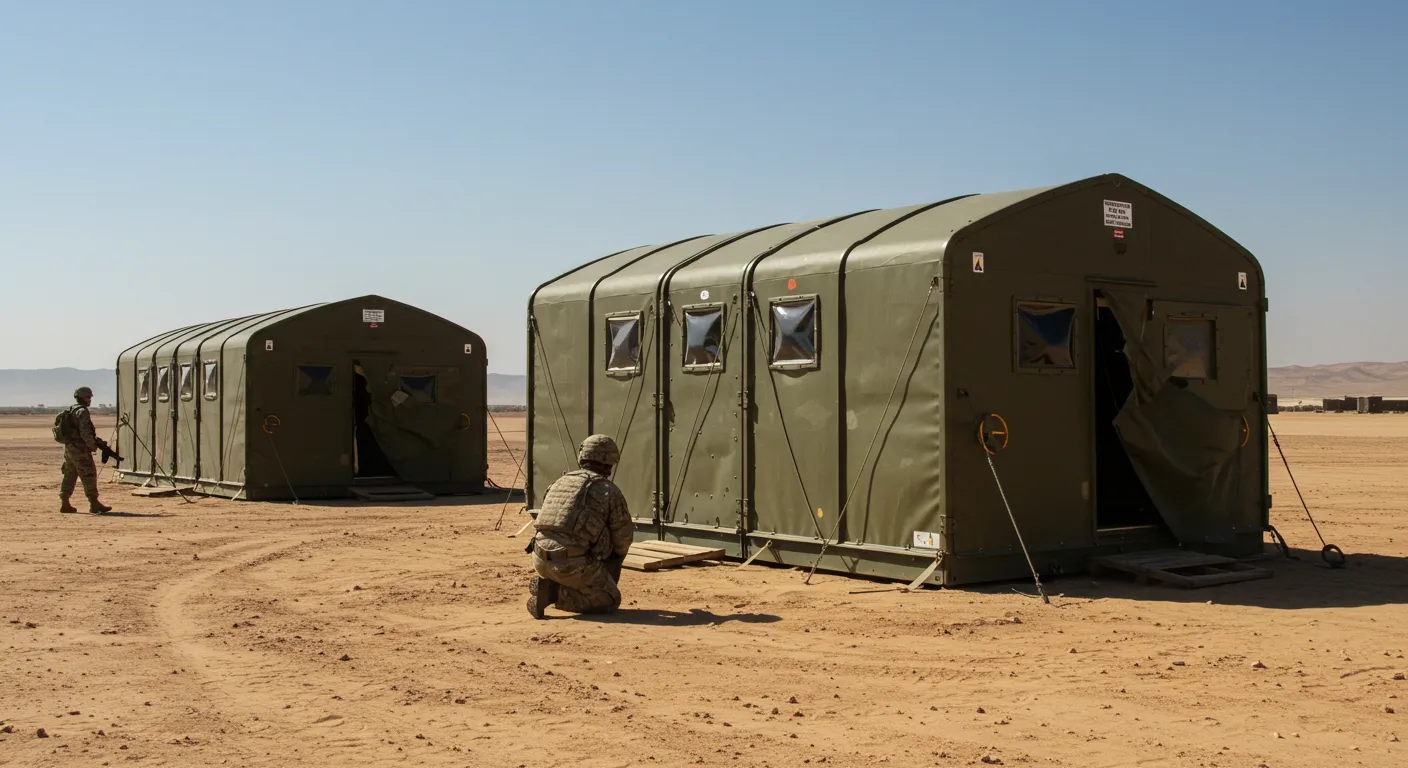Table of Contents
Modern-day military operations really require efficiency, speed and responsiveness. As threats become more global in their scope, so must supporting logistics infrastructure. In the past, logistics have been weighed down by heavy and resource-intensive structures that slow down deployment and increase cost. But with advances in lightweight and modular design, militaries can now deploy more responsive and sustainable logistics systems.
The Shift Toward Lightweight Solutions
Military logistics have really been dependent on heavy but robust structures over some decades. While such solutions were robust, they were extremely difficult to move around and deploy. Modern-day defense agencies globally are shifting in the direction of lightweight solutions that enhance mobility without compromising strength. Such innovations reduce transportation costs, enhance mobility under adverse terrain conditions and allow rapid deployment in conditions of crises.
Advantages of Modular Military Structures
One of the greatest military logistics advancements is utilizing modular structures. They can be easily disassembled and reassembled to mission specifications. By utilizing standard modules, troops can efficiently deploy operations in remote locations without cumbersome equipment or masses of personnel. Such versatility is particularly crucial in mobile command centers, medical facilities in the field and rescue operations.
The Role of Advanced Materials in Modern Logistics
Material science is also essential to create lightweight and modular logistics solutions. Advanced composites, reinforced polymers and high-performance alloys constitute lightweight and convenient-to-transit structures. The materials possess high strength against environmental factors such as extreme weather conditions, moisture and ballistic attack while maintaining minimal weight. The technology ensures that logistics infrastructure remains functional and secure under uncertain conditions.
The Importance of Rapid Deployment in Military Operations
Speed is critical to military logistics. Classical infrastructure requires weeks or months to deploy, making timely mission capability impossible. Lightweight and modular systems reduce setup time to a fraction of that of traditional infrastructure and allow forces to deploy effective bases within hours. Whether to respond to humanitarian crises or combat zones, rapid deployment capability provides a competitive advantage by positioning troops and assets effectively and efficiently.
Ultra-Lightweight Camouflage Net System in Tactical Logistics
Concealment and camouflage have a vital function in combat operations, particularly in areas that are contested. The ULCANS is a tactical logistics innovation that provides increased concealment with minimal weight. Compared to traditional camouflage systems that have a bulk that is cumbersome to move and deploy, ULCANS is extremely portable and can be easily transported and deployed without adding load bulk. Its ability to adapt to multiple environments enhances operational security and reduces detection threats in high-risk operations.
Enhancing Sustainability in Military Supply Chains
More and more, sustainability is at the forefront of defense logistics. Modular and lightweight systems have their roots in green practices with their minimization of fuel consumption and waste of resources. Recycling and efficient transportation minimize the environmental impact of operations to make defense compatible with the overall objectives of sustainability. Most modern modular buildings incorporate integrated solar panels and energy-conserving insulation to make them even more green.
Innovations in Transportable Shelter Systems
As operations become more dynamic, deployable shelter systems are assisting in boosting logistics efficiency. Lightweight and modular structures that can be easily deployed provide soldiers with instant shelter and working facilities in remote locations. As mobile barracks, command centers or medical facilities, such shelters are designed to be resilient and flexible to sustain military preparedness anywhere.
The Impact of 3D Printing on Modular Logistics
The integration of 3D printing technology is revolutionizing modular logistics. The military can now print spare parts, equipment and even structural components on demand with minimal dependency on traditional supply chains. It enables more independence in operations with rapid repair and adaptation capabilities in the field. Defense agencies can reduce lead times dramatically and increase mission efficiency in general through the application of 3D printing technology.
Tactical Mobility
Lightweight modular logistics have a direct function in enabling tactical mobility. The ability to move supplies, shelters, and equipment effectively and efficiently can be the determinant of victory or defeat in modern war. Modular designs enable militaries to respond to changes in battlefield conditions at a rapid pace while maintaining a strategic edge over adversaries.
Making Logistics Smarter with AI and Data Analytics
Artificial intelligence and data analytics are increasingly being utilized to make logistics more efficient in the military. In real-time, AI can examine vast amounts of information to foresee supply disruptions, identify more efficient routes of transportation and distribute resources efficiently. When coupled with lightweight and modular logistics, such technologies generate a responsive and flexible supply chain that can adapt to shifting challenges.
Also Read: Automation in Logistics: The Key to More Efficient Transport and Delivery
The Future of Military Logistics
In the future, military logistics will remain more agile, efficient and sustainable. New technologies in automation, artificial intelligence and smart materials will continue to drive lightweight and modular systems to make forces more responsive to a world that is constantly in flux. Integrating such cutting-edge solutions will enable defense agencies to make supply chains more streamlined, reduce their cost of operations and enhance mission efficiency.
Final Thoughts
The shift to lightweight, modular logistics design is not a fad—it’s a demand of contemporary defense planning. By embracing leading-edge materials, speed-of-delivery capacity and green strategies, military forces are positioning themselves to dominate in fluid operating environments. As global defense forces become ever more challenged, embracing innovative logistics solutions will be key to maintaining a competitive edge on the battlefield.


